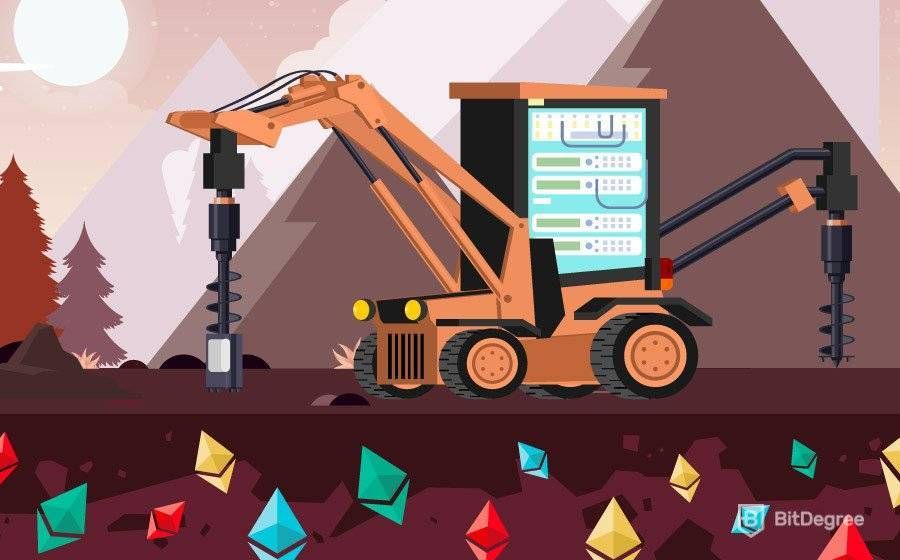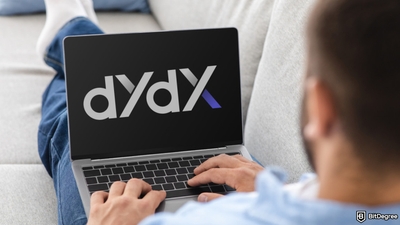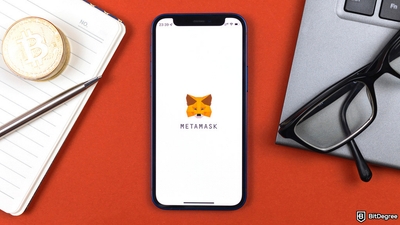Free Airdrop Season 7 is LIVE! Answer fun questions or do simple tasks to earn rewards from the $30K BitDegree prize pool. Participate Now ! 🔥
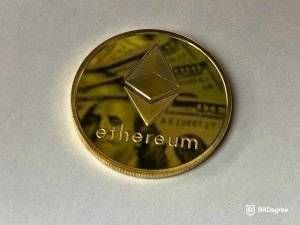 So you’ve spent days researching about Ethereum, checking the latest news and media coverage, explored every single topic related to this cryptocurrency and now you’re finally set to start mining. But how do you pick the right options and avoid wasting a lot of money? Well, good thing we’re here to talk about Ethereum mining hardware. More precisely, the components that are required for it.
So you’ve spent days researching about Ethereum, checking the latest news and media coverage, explored every single topic related to this cryptocurrency and now you’re finally set to start mining. But how do you pick the right options and avoid wasting a lot of money? Well, good thing we’re here to talk about Ethereum mining hardware. More precisely, the components that are required for it.
Ethereum mining rigs are becoming vastly popular. One of the reasons for this is that they are very different in both aspects of quality and price. You can choose to buy a very simple beginner rig dirt cheap, or you might want to invest in something that the pros use. Or maybe you’ve even decided on building your device?
Whatever the case might be, you’ll need a lot of knowledge on the topic - what components are good at what processes, how rigs work, etc. Good thing that you have this handy guide in front of you - I’ll teach you everything you need to know when thinking about the best Ethereum miners!
Also, before moving further, you should know that there are better ways to obtain Ethereum, then mining it. You can choose from a variety of cryptocurrency exchanges that allow you to buy ETH with fiat money, and start trading instantly. A few such platforms include Binance, Coinbase, KuCoin and Coinamma.

|

|
|
|---|---|---|
| Advanced Users & Beginners | Advanced Users & Beginners | |
| United States, United Kingdom, Germany, Canada, France, + 100 more | Turkey, Argentina, Vietnam, Ukraine, + 180 more | |
| All Coinbase Coupons | See All Coupons of Best Exchanges | |
| A reliable, well-known and respected cryptocurrency exchange platform. | One of the leading crypto exchange platforms in the industry. | |
|
Visit site
Read review |
See TOP10 Brands
Read review |
Now let's move further!

Did you know?
Subscribe - We publish new crypto explainer videos every week!
What is Solana in Crypto? (Beginner-Friendly Animation)


Table of Contents
Ethereum Mining Hardware - Rig
Ethereum mining hardware (better known as an Ethereum mining rig) is a specifically designed machine with a solemn purpose - to mine Ethereum. Sure, you could theoretically use this contraption for other things (like gaming or other PC operations), but as time goes on, fewer and fewer people use rigs for purposes other than mining.
Latest Deal Active Right Now:Head to BitDegree Missions, gather as many Bits as possible & claim your stake of the $30,000 Prize Pool! Don't waste your time & start collecting Bits by completing Missions and referring friends.
Types of Mining Rigs
Generally, there are two types of Ethereum mining rigs - CPU and GPU.
CPU mining rigs use the CPU processor to enforce complex algorithms to solve blocks (the ones that makeup blockchains). This type of mining used to be a very popular choice when it came to the best Ethereum miners, but as of late, it’s no more widely used.
CPU mining rigs used to be (in some cases - still are) very popular among beginner miners. The reason behind this is that they’re very cheap and easy to use - all you require is a computer. The downside of this, however, is that the process is extremely slow - it might take months (even years!) until some sort of noticeable results is witnessed.
GPU mining rigs use graphics cards in the same way that the CPU ones use processors, except that the graphics cards don’t perform algorithms - they simply complete the mining processes in enclosed networks.
GPU mining rigs are superior to CPU ones in almost every aspect of the matter. But the natural downside to this is that they’re super expensive. A proper GPU mining rig can cost anywhere from $3000 to $5000!
No matter the type, all mining rigs consist of a power supply, motherboard, graphics cards, cooling device and some sort of a carcass to hold all of this together - it might be wooden or aluminum frames.
Building a Mining Rig
Now that you know what makes up the general types of mining rigs, let’s take a look at how they are built. If you have basic knowledge of how mining rigs should look - good! But if you don’t, no need to worry - what you see on the internet when you Google for Ethereum mining hardware are just examples of what’s the most optimized way a rig should look like. Truth be told, you can assemble and make your Ethereum mining hardware look any way you like - as long as it works properly.
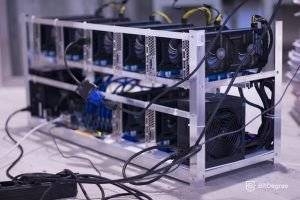
Before we talk about the process of building a rig, however, let’s find out what are the best essential parts for any rig and where to look for them.
Best GPU For Mining
If you’re planning on building a GPU mining rig, it’s probably going to contain more than one (or ten) graphics card. But to be able to choose the correct GPU to maximize your income you first of all need to research about the best GPUs for mining.
When it comes to GPUs, there are two big contenders in the market - Nvidia and AMD. Most of the lists that you’ll find online that claim to talk about the “best GPU for mining” list nothing but Nvidia and AMD graphics cards unless stated otherwise.
This makes perfect sense, however. Both companies have more than proven their ability to create high quality, state-of-the-art technology, therefore both company's products are dominating the lists.
To make it fair and to avoid redundancy, I’m going to list one GPU from each company to give examples of what the best GPU for mining should look like.
Nvidia GeForce GTX 1070
The Nvidia GeForce GTX 1070 is considered by many to be the best choice when it comes to mining cryptocurrencies. Gamers have already noticed just how good this graphics card can be, and crypto enthusiasts were quick to follow.
The best quality that this GPU has is that it can maintain a relatively high hashing rate while not using cosmic amounts of power to do so. Usually, GPUs require immense amounts of electricity to feed them, which in turn might empty the miner's wallet before he even begins noticing any profits from his mining endeavor.
AMD Radeon RX580
AMD Radeon RX580 is the main competitor for Nvidia’s GTX 1070. Radeon’s hashrate is unnoticeably bit lower than GTX’s, but where it lacks in hashrate, RX580 makes up in price - it is viewed as a cheaper, yet similarly performing an alternative to Nvidia GeForce GTX 1070.
Same as the GTX, Radeon also keeps low power usage to maximize potential profits. This graphics card is so sought after by crypto enthusiasts worldwide that it might be difficult to find one right off the bat.
As I’ve mentioned earlier on in the guide, GPU Ethereum mining hardware isn’t cheap. And now let’s talk numbers.
The Nvidia GeForce GTX 1017 retails at a price of almost $470, while the AMD Radeon RX580 goes for around $320. Now imagine how much you’d have to invest if you wanted to create your GPU rig made out of, let’s say, six graphics cards? Remember to include all of the other costs (motherboard, power supply, etc.) to the amount that you’re thinking about.
Now you see what I meant when I said “expensive”?
Best Motherboard For Mining
Another very important part of any piece of Ethereum mining hardware is a motherboard. In this field of equipment, the two main competitors are ASUS and ASRock.
ASUS B250 Mining Expert
ASUS B250 Mining Expert is viewed by many as the hands-down best mining motherboard ever created. And these claims aren’t empty - this motherboard was created with the specific thought of miners in mind.
It can support a whopping amount of up to 19 - yes, 19 - GPUs at a time. Imagine that you have this beast attached to 19 Nvidias or AMDs!
The ASUS B250 Mining Expert is specifically designed for miners. It has a special mining function that deals with the tedious work for you.

Did you know?
Subscribe - We publish new crypto explainer videos every week!
What Is Tether? (USDT SIMPLY Explained With Animations)



- Secure and reliable
- Accepts fiat currencies
- Lots of trading options
- Reputable exchange
- Accepts fiat currencies
- Offers various trading options

- Fiat currencies - accepted
- Simple to use
- Accepts only the most trustworthy cryptocurrencies
- A leading cryptocurrency exchange platform
- Best for beginner investors
- Accepts fiat currencies

- Fully reserved and transparent
- Multiple tradable asset classes
- Over 300 supported cryptos
- Over 300 cryptocurrencies
- Secure & transparent
- Fully reserved
ASRock H110 Pro BTC+
The ASRock H110 Pro BTC+ is thought by many to be a good alternative to ASUS’s Mining Expert. ASRock supports 13 GPU’s which, in all honesty, is probably more than one might ever need.
When it comes to competing in the “best mining motherboard” competition, there is one problem. Probably the only real drawback for this motherboard is that it’s a bit tricky to set up and use. If you’re just starting, you might want to choose something easier to deal with. However, if you’re an expert in the field of cryptos and - especially - Ethereum mining hardware, then you should have no problem with the ASRock H110 Pro BTC+.
The ASUS B250 Mining Expert amounts to a total price of almost $150, while the ASRock H110 Pro BTC+ retails at $99,99. Now you can add these prices to the “total price for building the best Ethereum mining hardware” list.
Also, keep in mind that it's crucial to get a hardware wallet to keep your assets secure. A few of the industry leaders include Ledger Nano X and Trezor Model T.
How to Build a Mining Rig?
Now that you’ve got an idea of how the most common types of mining rigs are built, we can finally jump into the building process. You’ve made your lists, gathered the materials (including the best GPU for mining and the best mining motherboard) and you’re ready to build some Ethereum mining hardware.
First of all, you should build the frame. Any type of sturdy material will work, and remember - it doesn’t have to be visually perfect as long as it does its job well.
Now it’s time to add the motherboard and attach all of the cables to their respective sockets. Once you take care of that, add the GPUs into the picture. After you plug it all in and add the cooling and the power supply, you’ll need a USB with an operating system (Windows, Mac, etc.).
Once you’ve installed the operating system and finished setting stuff up at BIOS, all that’s left is to download and install a mining software and overclocking software. And you’re done! You can start mining immediately.
Buying a Rig
If spending time collecting and assembling your own Ethereum mining hardware seems like too much of a challenge, or if you’re simply not a DIY person in heart, another option is to buy the mining rig from a third party seller.
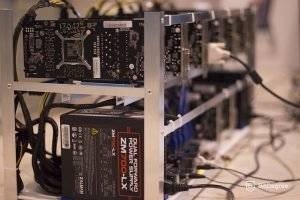
There are a lot of people who are either a) selling assembled mining rigs, or b) assembling and putting together your mining rigs for you (for a fee). These people usually put ads into popular digital marketing forums (i.e. Craigslist) offering their products or services.
The rigs you can buy this way might be worth looking into, for if you’re lucky, you might get a great deal and save a lot of money. But on the other hand, you should always watch out for fraud and ill intent - some people might try to scam or downright rob you, others might try to sell you a broken, damaged, not working or hardly working rig.
To avoid these types of situations, always have a friend that knows what he’s doing (or better yet - an expert in the field) check the rig that you’re thinking about buying. It’s always better to take up some time and be sure rather than later find out that you’ve been tricked.
Now you know about the ins and outs of building and maintaining your own Ethereum mining hardware. You can go out and start your very own cryptocurrency mining farm. If at first, you don't succeed, don't worry - assembling a mining rig is no easy feat. Just keep on trying and don't give up - you'll get there eventually!
Conclusion
There are many different ways to look at Ethereum mining software - you might judge it based on its type (CPU or GPU), GPU number, motherboard quality or even the cooling method. However, there is a countless number of ways to construct your mining rig.
The easiest way to get into the cryptocurrency mining world is to gather every single part of information there is, analyze it and conclude, and then use the filtered information to collect and assemble your first rig. It doesn’t have to be fancy or expensive - better yet, try starting on the cheap side of the market. This will give you a chance to make your judgments and grow through the process.
Remember to choose reputable software before you start your machine up. After that, all you need to deal with are the electricity cost and cooling conditions.
Ethereum mining hardware tends to get hot. You must have some sort of air conditioning and special cooling equipment. In case if you fail to cool your machinery, it’ll eventually (meaning real fast) burn out. You will have wasted all of your investments and time. You probably wouldn't want that, now would you?
As for electricity, your best bet is to find someplace that offers super cheap electricity but is somewhat spacious (especially if your long-term plans are to build a farm).
However, apart from that, you can also consider buying Ethereum on reliable cryptocurrency exchanges and even consider starting trading. A few of the recommended platforms include Binance and KuCoin.
Also once you already have Ethereum, make sure to choose a secure hardware wallet, such as Ledger Nano X and Trezor Model T.
$70 BTC VOUCHER
Ledger Limited-time Deal
Unwrap your savings with this hot Ledger deal. Grab the Ledger Flex or Nano wallets and receive a $70 BTC Bonus. Secure both – your own funds and those of your loved ones!
We have reached the end of this Ethereum mining rig guide. I hope you enjoyed the read, and furthermore - I hope you'll put this information to good use!
The content published on this website is not aimed to give any kind of financial, investment, trading, or any other form of advice. BitDegree.org does not endorse or suggest you to buy, sell or hold any kind of cryptocurrency. Before making financial investment decisions, do consult your financial advisor.


